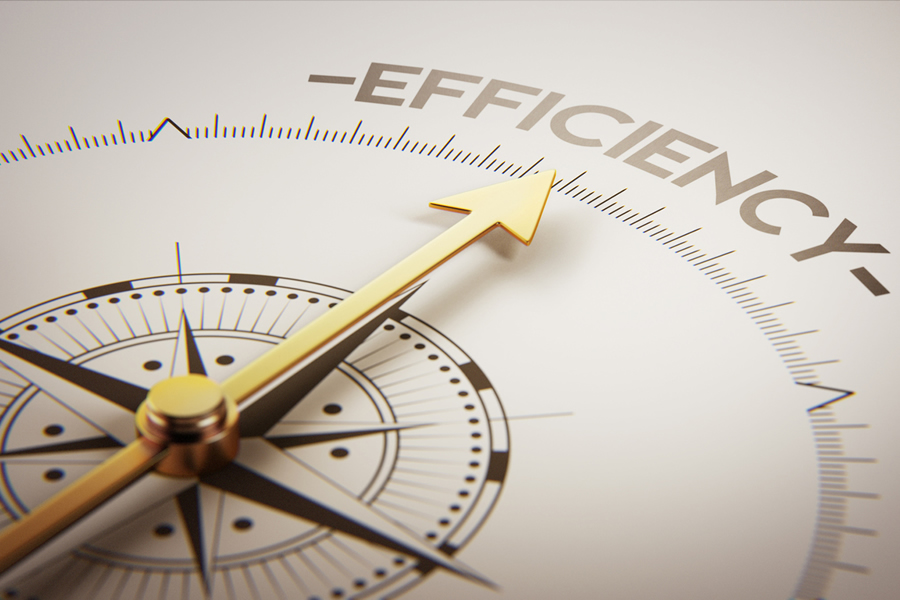Donor Events. Fun for Business?

The Gala Gambit: How Much Did Your Donor Event Really Cost? It’s no secret that some fundraisers rely on elaborate gimmicks to separate money from donors’ wallets. In a Disney movie, Daddy Warbucks would come to the rescue, expecting nothing in return for his donation but a feeling of peace and goodwill at the end of the day. Reality is very different, though, because most donors want something more than a clear conscience in return for their investment. It’s human nature. Show Me the Money But all too often, fundraisers spend scads of time, money and effort creating flashy, elaborate events that rival a Great Gatsby party to reward donors who, in return, make small or medium-sized gifts of $1,000, $5,000 or $10,000. I can hear the whir of your mental cogs as you do the calculations now: “But Viken, if we get 10 people who give us $10,000 at our next party, that’s $100,000!” Congratulations on your math skills. That figure sounds great, and I’m happy you’ve got your mind on the money. But did you really consider the true cost of your event? I’m not just talking dollars and cents here — I’m talking about dollars that make sense. Lord of the Blings Let’s consider an event I was just invited to attend in a famous casino town: It includes a 5-star, 5-course dinner and wine pairing event at a posh restaurant; a two-night stay in luxury suites; live, top-notch entertainment, plus a second dinner and cocktail hour — this thing practically rivals the Met Gala. The only thing missing was a swag bag with a Swarovski crystal-studded iPhone and the keys to a Ferrari. Looks great on paper, and it’s sure to attract donors. But think about the real cost. Yes, I know you’ll say “But most of the amenities were donated, Viken. It didn’t cost us a thing to book Jay-Z!” The Real Math Let’s break down the expenses, shall we? Travel (mileage and time spent in planes, trains and automobiles adds up). Time spent planning the events (because time is money, and these things take time to organize). Lawyer fees for drafting the fine print (the care and feeding of a lawyer is pricey, even if you keep them in a closet on-site). Rolaids (For when the entertainment falls through the week of the gala). Tylenol (For the inevitable headaches caused by reading the fine print, finding backup entertainment, and getting sponsors to return calls). Plastic surgery (to create a permanent grin, because by the time the event rolls around you’ll be too tired to remember to smile at donors). Carpal Tunnel surgery (from shaking hands with everyone in the room). In All Seriousness Fundraising events are a necessity. But all too often, fundraisers forget the easiest, most obvious solution: A planned giving effort (not even a program!) that could have raised hundreds of thousands of dollars had it been implemented 5 to 10 years ago. And it costs next to nothing when compared with the alternatives. Don’t Wait Another Ten Years Implement a planned giving program (or, just an effort) now (a marketing plan helps). You’ll be thanking yourself today, and again in a few years when you don’t have to scramble to find a replacement for Cher because she needed emergency hip surgery the day of your event. As an Aside … Some of you might be thinking (very few, I hope!) “Heck, I wasn’t here 10 years ago, and I probably won’t be here when those planned gifts come in 5, 10 or 20 years from now. I want to focus on immediate results.” Well, that’s the kind of mentality that creates a constant need for immediate capital. If that’s how you think, it’s time to change your mindset, because it’s not doing your organization any favors. Categories: Annual Gifts, Giving, Major Gifts, Planned Giving Marketing, Marketing Planned Giving, Relationships
Advisors and Philanthropy

The face of philanthropy is changing: Researchers found that many donors want to talk with an advisor before they’ll even approach a nonprofit to discuss their intentions.
Don’t Look at the Wall

Two great quotes from Mario Andretti: “If everything seems under control you are not going fast enough.” and “Don’t look at the wall.”
Is a Planned Giving Website Worth the Money?

The other day a colleague from another nonprofit, a fairly small one, told me he was leaning away from spending money on a new planned giving website. This is not the first development person I’ve heard struggle with this decision.
On Productivity, Planned Giving and Your Career

Do you set daily goals? Do you think multitasking is helpful? Do you know the difference between motion and action? These 8 hacks will get your productivity — and your career — energized.
Do You Know This Magic Key Question?

My colleague was at her wits’ end with a donor we’ll call Philip. Everything about Philip screamed MAJOR DONOR OF THE HIGHEST LEVEL! He had all three As of a great donor prospect.
Get Un-Stuck and Get Moving

There are many smart people walking around with brilliant ideas in their heads, but just a small few of them can manage to take action and make something happen.
Better Than Average

Do you wish to be better than average in your career and in your life? If you do, then you need to behave in a better than average fashion. It’s an obvious statement, but an endless number of people belie this sound reasoning.
Why Getting In The Will Today Matters

Long-term study shows multiple benefits for charities to get in the estate plan sooner. We all know charitable estate giving is a big deal. In comparison, despite all of the media attention and conversation generated by corporate giving, annual estate giving has always been much larger. (In some years, charitable estate gifts are more than double all corporate gifts.) Of course, we all know that to receive any estate dollars, your organization must get in the will or other estate planning document. So, getting in the will eventually is clearly important. Get into the will today. But, new evidence is emerging as to why it is important not just to get in the will, but to get in the will today. The evidence comes from a large national survey called the Health and Retirement Study. This study, starting in 1992, tracks older adults (age 50+) year after year. It includes information about their current estate plans, their current charitable giving, and their post-mortem transfers. Because this study tracks changes in giving and changes in the estate plan for the same people over many years, we can now see what happens to current giving after charity is added into the estate plan. We do this by looking only at those older adults who didn’t have a charitable component in their estate plan and then later added charity into their plans. This way we are able to compare their giving before and after they added charity to the will. If you’re in their wills, you’re on their minds. So, what happens after people put charity into their will? Simply put, giving goes up. A lot. During the eight years before these people had added charity into their wills, their annual giving averaged $4,210. Two years after the will had changed to include charity, their average annual giving had doubled to $8,500. Even four years after the will had changed, their annual giving was still much higher than before averaging about $7,500. Although we can’t prove a cause-effect relationship (only that it happens at the same time), the connection makes sense. When the donor puts a charity in the will, the donor is treating the charity like a family member. That commitment naturally draws the donor closer to the cause, and makes it more likely that the donor will support in other ways. Why wait when you can benefit now? Some donors may increase their current giving by reasoning that, “Since the charity will be getting money from my estate anyway, why not give it now when I can see the impact?” Fundraisers use similar reasoning to convert a revocable estate gift to an irrevocable planned gift. The explanation goes, “You are planning to make the gift anyway, why not make it irrevocable and take an income tax deduction today through a [remainder interest deed, charitable remainder trust, charitable gift annuity, etc.]?” Want more? Get in early. Getting in the will early can help by increasing current giving and by opening conversations to convert the gift into an irrevocable planned gift. It may also help by increasing the size of the estate gift. In reviewing the over 12,000 decedents in the study, most charitable plans were added within five years of death. On average, one longer-term plan was worth four plans made in the last two years of life. In short, getting the charitable plan in the will earlier was associated with more dollars for the charity (as long as the charitable plan stayed in the will). Don’t forget about your bequest donors. So, there are a lot of good reasons to get in the plan early. But, one of those reasons is not so that the fundraiser can “count it and forget it.” The same study showed an enormous amount of end-of-life instability in the charitable component of the estate plan. If you forget about your planned bequest donors, they will certainly return the favor. Russell James, J.D., Ph.D., CFP is a professor in the Department of Personal Financial Planning at Texas Tech University. He directs the on-campus and online graduate program in Charitable Financial Planning. Contact: russell.james@ttu.edu RELATED TOOLS: Bequest Brochure Estate Planning Toolkit Categories: Beneficiary Designations, Bequests, Giving, Planned Giving Marketing, Marketing Planned Giving, Relationships
Is It Okay To Use A Bequest For Operating Expenses?
Question My nonprofit organization currently uses all bequest proceeds for operating expenses. The family of recently deceased donor has questioned this and wants us to designate the funds for endowment. What should we do? Answer Remember that the only funds that serve as true endowment are those that are restricted by the donor. Since the donor’s will did not restrict the funds, it is impossible to have these funds go to endowment. However, they can be treated as “quasi-endowment,” “board designated endowment,” or “funds functioning as endowment,” which are funds your organization’s board will treat as endowment (only using the draw from these assets based upon your spending rule) unless the board formally acts to tap into the principal. The larger question you need to address is what is your policy on using unrestricted planned gifts and why. Many organizations are not particularly thoughtful on this point and simply use the dollars to plug holes in their operating budgets. Best practice for donor-centered organizations encourages a formal policy based on donor expectations. Most donors who make unrestricted planned gifts expect the proceeds to go to endowment. They are giving an organization a gift that represents part of their life’s work and hope that it will sustain the organization going forward. A policy that directs all or most unrestricted planned gifts to board designated endowment honors that legacy. At the same time, organizations do need some operating funds. Probably the best compromise is to set a policy stating that the first $X or X% (assume 5-10% or $5,000-$10,000) of any unrestricted planned gift is allocated to operating expenses, with the balance automatically allocated to board designated endowment. The board can always override this policy if funds from a particular planned gift are needed for operating or another purpose (or the donor/family has a clear preference that isn’t in the will). But it sets the tone that such gifts are not intended to be spent immediately. Categories: Beneficiary Designations, Bequests, Planned Giving Marketing, Marketing Planned Giving, Relationships